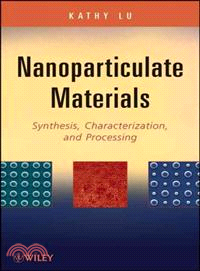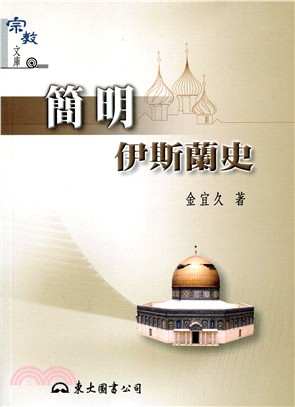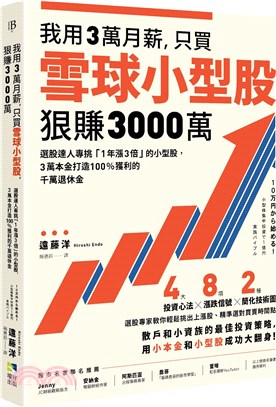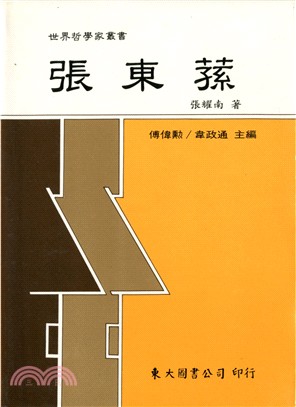Nanoparticulate Materials: Synthesis, Characterization, And Processing
商品資訊
定價
:NT$ 8323 元優惠價
:90 折 7491 元
若需訂購本書,請電洽客服 02-25006600[分機130、131]。
相關商品
商品簡介
作者簡介
目次
商品簡介
Focusing on nanoparticle-based materials, Lu (materials science and engineering, Virginia Polytechnic Institute and State University) both moves beyond the introductory stage of nanomaterials, and provides a transition from conventional particulate materials to materials based on nanoparticles. The book is organized to reflect the order of nanoparticle processing, she says, so it can be used as a graduate or upper-level undergraduate textbook. She covers synthesizing and characterizing nanoparticles, nanoparticle-based superstructures and material shaping, sintering, and manufacturing issues and emerging areas. Chapter-end questions are provided. Annotation c2013 Book News, Inc., Portland, OR (booknews.com)
作者簡介
KATHY LU, PhD, is a Professor of Materials Science and Engineering at Virginia Tech who teaches both undergraduate and graduate courses. She has authored three book chapters and some 100 papers as well as edited four books. Dr. Lu has been honored with several awards, including the Friedrich Wilhelm Bessel Research Award, Karl Schwartzwalder-PACE Award, and Ralph E. Powe Junior Faculty Enhancement Award.
目次
Preface
About the Author
List of Symbols
List of Abbreviations
Chapter 1 Introduction
1.1. Overview 2
1.2. Nanoparticle-based Materials 3
1.3. Unique Characteristics 4
1.4. Properties 7
1.5. Key Scientific and Technical Challenges 13
1.6. Applications 15
1.7. Processing Overview 17
1.8. Summary 19
Questions 19
References 20
Chapter 2 Nanoparticle Synthesis
2.1. Introduction 3
2.2. Theory 4
2.2.1. Nucleation 4
2.2.1.1. Homogeneous nucleation 4
2.2.1.2. Heterogeneous nucleation 6
2.2.2. Growth 7
2.3. Gas Phase Nanoparticle Synthesis 10
2.3.1. Gas-gas reaction 10
2.3.1.1. Physical vapor synthesis 10
2.3.1.2. Chemical vapor synthesis 18
2.3.1.3. Laser ablation 21
2.3.2. Gas-liquid reaction 27
2.3.3. Gas-solid reaction 30
2.4. Liquid Nanoparticle Synthesis 30
2.4.1. Fundamental method 30
2.4.1.1. Precipitation 30
2.4.1.2. Metal salt reduction 35
2.4.1.3. Hydrolysis 37
2.4.1.4. Solvothermal synthesis 41
2.4.1.5. Cryochemical synthesis 46
2.4.2. Confinement method 48
2.4.2.1. Spray pyrolysis 48
2.4.2.2. Solventless synthesis 53
2.4.3. Composite nanoparticle synthesis 54
2.4.3.1. Core/shell structure 54
2.4.3.2. Electroless deposition 59
2.4.3.3. Templating 60
2.4.3.4. Bio-based synthesis 62
2.4.4. Field-assisted nanoparticle synthesis 65
2.4.4.1. Micelle synthesis 65
2.4.4.2. Laser-assisted synthesis 68
2.4.4.3. Plasma-assisted synthesis 71
2.4.4.4. Microwave-assisted synthesis 73
2.4.4.5. Sonication-assisted synthesis 74
2.4.4.6. Radiation-assisted synthesis 77
2.4.4.7. Electric field assisted synthesis 77
2.5. Solid Nanoparticle Synthesis 78
2.5.1. Milling 78
2.5.2. Reaction between solids 83
2.6. Summary 85
Questions 91
References 93
Chapter 3 Nanoparticle Characterization
3.1. Introduction 2
3.2. Size, Shape, and Morphology 3
3.2.1. Microscopy 4
3.2.1.1. Scanning electron microscopy 4
3.2.1.2. Transmission electron microscopy 5
3.2.1.3. Scanning probe microscopy 7
3.2.2. Dynamic light scattering 9
3.2.3. X-Ray diffraction line broadening 10
3.2.4. Small angle scattering 12
3.2.5. Optical spectroscopy 17
3.3. Energetics and Global Thermodynamics 17
3.4. Surface Area 19
3.5. Porosity and Pore Size 20
3.5.1. Electron imaging 21
3.5.2. Gas adsorption 21
3.6. Structure 23
3.6.1. Surface structure 23
3.6.1.1. Low energy electron diffraction 23
3.6.1.2. Atomic force microscopy 25
3.6.1.3. Scanning tunneling microscopy 25
3.6.2. Bulk structure 27
3.6.2.1. X-ray diffraction 27
3.6.2.2. Electron diffraction 28
3.6.2.3. Neutron diffraction 32
3.7. Composition 32
3.7.1. Surface composition 33
3.7.1.1. Auger electron spectroscopy 33
3.7.1.2. X-ray photoelectron spectroscopy 36
3.7.1.3. Secondary ion mass spectroscopy 38
3.7.2. Bulk composition 40
3.7.2.1. Optical atomic spectroscopy 40
3.7.2.2. X-ray fluorescence spectroscopy 41
3.7.2.3. Energy dispersive X-ray analysis 42
3.7.2.4. Electron energy loss spectroscopy 45
3.7.2.5. Fourier transform infrared spectroscopy 47
3.7.2.6. Ultraviolet-visible absorption spectroscopy 49
3.7.2.7. Raman spectroscopy 52
3.8. Needs in Nanoscale Characterization 54
3.9. Summary 55
Questions 59
References 61
Chapter 4 Nanoparticle-Based Superstructures
4.1. Introduction 2
4.2. Top-down 2
4.2.1. Photolithography 3
4.2.2. Electron beam lithography 13
4.2.3. Ion beam lithography 19
4.2.4. Other top-down processes 21
4.3. Bottom-up 23
4.3.1. Non-directional interactions 26
4.3.1.1. van der Waals forces 26
4.3.1.2. Dipole moments 28
4.3.1.3. Electrostatic interactions 29
4.3.2. Directional interactions 30
4.3.2.1. Covalent bonding 31
4.3.2.2. Hydrogen bonding 33
4.3.4. Field-assisted assembly 35
4.3.5. Capillary forces 36
4.3.6. Other approaches 41
4.4. Hybrid 42
4.4.1. Functionalized interactions 43
4.4.2. Non-functionalized interactions 46
4.5. Templating 48
4.5.1. Natural template 48
4.5.2. Synthetic template 50
4.6. 3D Assembly 57
4.7. Summary 61
Questions 61
References 62
Chapter 5 Nanoparticle-Based Material Shaping
5.1. Introduction 2
5.2. Dry Forming Techniques 3
5.2.1. Uniaxial compaction 3
5.2.2. Cold isostatic pressing 5
5.2.3. Superhigh pressure compaction 6
5.2.4. Dynamic compaction 8
5.3. Semi-dry Forming Techniques 10
5.3.1. Molding 11
5.3.2. Extrusion 14
5.4. Wet Forming Techniques 19
5.4.1. Colloidal suspension 20
5.4.2. Pressure casting 24
5.4.3. Tape casting 28
5.4.4. Freeze casting 31
5.4.5. Gel casting 33
5.4.6. Electrophoretic deposition 36
5.5. Digital Processing Techniques 41
5.5.1. Direct writing 41
5.5.2. Stereolithography 45
5.5.3. Ink-jet printing 48
5.6. Bio-derived Processes 49
5.6.1. Bioactive materials 49
5.6.2. Biomimetic materials 50
5.7. Summary 51
Questions 55
References 55
Chapter 6 Sintering
6.1. Introduction 2
6.2. Theories 2
6.2.1. Sintering stages 2
6.2.2. Shrinkage 3
6.2.3. Grain growth 4
6.3. Characteristics of Nanoparticle Sintering 6
6.3.1. Designer systems 6
6.3.2. Particle size distribution and packing characteristics 7
6.3.3. Complex systems 8
6.3.4. Phase transformation 8
6.3.5. Lower sintering temperature 9
6.3.6. Larger sintering driving force 11
6.4. Porous Nanoparticle Material Sintering 12
6.4.1. Partial sintering 13
6.4.2. Pore forming sintering 16
6.4.3. Template-directed sintering 20
6.4.4. Special sintering processes 23
6.4.4.1. Microwave sintering 23
6.4.4.2. Electrical sintering 27
6.4.4.3. Laser sintering 29
6.5. Dense Nanoparticle-based Material Sintering 30
6.5.1. Free sintering 30
6.5.1.1. Customized nanoparticle systems 30
6.5.1.2. Customized sintering cycles 34
6.5.1.3. Remarks on free sintering 38
6.5.2. Pressure sintering 38
6.5.2.1. Hot pressing 39
6.5.2.2. Hot isostatic pressing 43
6.5.2.3. Sinter forging 45
6.5.2.4. Pressure spark plasma sintering 46
6.5.2.5. Other sintering techniques 52
6.6. Summary 53
Questions 54
References 57
Chapter 7 Manufacturing Issues and Emerging Areas
7.1. Introduction 2
7.2. Defects and Measurement 3
7.3. Process and Quality Control 8
7.4. Modeling and Simulation 9
7.5. Environmental and Health Concerns 13
7.5.1. Environmental concerns 14
7.5.2. Health concerns 16
7.6. Summary 18
Questions 19
References 19
Appendix 1 Nomenclatures
Appendix 2 Units
Index
About the Author
List of Symbols
List of Abbreviations
Chapter 1 Introduction
1.1. Overview 2
1.2. Nanoparticle-based Materials 3
1.3. Unique Characteristics 4
1.4. Properties 7
1.5. Key Scientific and Technical Challenges 13
1.6. Applications 15
1.7. Processing Overview 17
1.8. Summary 19
Questions 19
References 20
Chapter 2 Nanoparticle Synthesis
2.1. Introduction 3
2.2. Theory 4
2.2.1. Nucleation 4
2.2.1.1. Homogeneous nucleation 4
2.2.1.2. Heterogeneous nucleation 6
2.2.2. Growth 7
2.3. Gas Phase Nanoparticle Synthesis 10
2.3.1. Gas-gas reaction 10
2.3.1.1. Physical vapor synthesis 10
2.3.1.2. Chemical vapor synthesis 18
2.3.1.3. Laser ablation 21
2.3.2. Gas-liquid reaction 27
2.3.3. Gas-solid reaction 30
2.4. Liquid Nanoparticle Synthesis 30
2.4.1. Fundamental method 30
2.4.1.1. Precipitation 30
2.4.1.2. Metal salt reduction 35
2.4.1.3. Hydrolysis 37
2.4.1.4. Solvothermal synthesis 41
2.4.1.5. Cryochemical synthesis 46
2.4.2. Confinement method 48
2.4.2.1. Spray pyrolysis 48
2.4.2.2. Solventless synthesis 53
2.4.3. Composite nanoparticle synthesis 54
2.4.3.1. Core/shell structure 54
2.4.3.2. Electroless deposition 59
2.4.3.3. Templating 60
2.4.3.4. Bio-based synthesis 62
2.4.4. Field-assisted nanoparticle synthesis 65
2.4.4.1. Micelle synthesis 65
2.4.4.2. Laser-assisted synthesis 68
2.4.4.3. Plasma-assisted synthesis 71
2.4.4.4. Microwave-assisted synthesis 73
2.4.4.5. Sonication-assisted synthesis 74
2.4.4.6. Radiation-assisted synthesis 77
2.4.4.7. Electric field assisted synthesis 77
2.5. Solid Nanoparticle Synthesis 78
2.5.1. Milling 78
2.5.2. Reaction between solids 83
2.6. Summary 85
Questions 91
References 93
Chapter 3 Nanoparticle Characterization
3.1. Introduction 2
3.2. Size, Shape, and Morphology 3
3.2.1. Microscopy 4
3.2.1.1. Scanning electron microscopy 4
3.2.1.2. Transmission electron microscopy 5
3.2.1.3. Scanning probe microscopy 7
3.2.2. Dynamic light scattering 9
3.2.3. X-Ray diffraction line broadening 10
3.2.4. Small angle scattering 12
3.2.5. Optical spectroscopy 17
3.3. Energetics and Global Thermodynamics 17
3.4. Surface Area 19
3.5. Porosity and Pore Size 20
3.5.1. Electron imaging 21
3.5.2. Gas adsorption 21
3.6. Structure 23
3.6.1. Surface structure 23
3.6.1.1. Low energy electron diffraction 23
3.6.1.2. Atomic force microscopy 25
3.6.1.3. Scanning tunneling microscopy 25
3.6.2. Bulk structure 27
3.6.2.1. X-ray diffraction 27
3.6.2.2. Electron diffraction 28
3.6.2.3. Neutron diffraction 32
3.7. Composition 32
3.7.1. Surface composition 33
3.7.1.1. Auger electron spectroscopy 33
3.7.1.2. X-ray photoelectron spectroscopy 36
3.7.1.3. Secondary ion mass spectroscopy 38
3.7.2. Bulk composition 40
3.7.2.1. Optical atomic spectroscopy 40
3.7.2.2. X-ray fluorescence spectroscopy 41
3.7.2.3. Energy dispersive X-ray analysis 42
3.7.2.4. Electron energy loss spectroscopy 45
3.7.2.5. Fourier transform infrared spectroscopy 47
3.7.2.6. Ultraviolet-visible absorption spectroscopy 49
3.7.2.7. Raman spectroscopy 52
3.8. Needs in Nanoscale Characterization 54
3.9. Summary 55
Questions 59
References 61
Chapter 4 Nanoparticle-Based Superstructures
4.1. Introduction 2
4.2. Top-down 2
4.2.1. Photolithography 3
4.2.2. Electron beam lithography 13
4.2.3. Ion beam lithography 19
4.2.4. Other top-down processes 21
4.3. Bottom-up 23
4.3.1. Non-directional interactions 26
4.3.1.1. van der Waals forces 26
4.3.1.2. Dipole moments 28
4.3.1.3. Electrostatic interactions 29
4.3.2. Directional interactions 30
4.3.2.1. Covalent bonding 31
4.3.2.2. Hydrogen bonding 33
4.3.4. Field-assisted assembly 35
4.3.5. Capillary forces 36
4.3.6. Other approaches 41
4.4. Hybrid 42
4.4.1. Functionalized interactions 43
4.4.2. Non-functionalized interactions 46
4.5. Templating 48
4.5.1. Natural template 48
4.5.2. Synthetic template 50
4.6. 3D Assembly 57
4.7. Summary 61
Questions 61
References 62
Chapter 5 Nanoparticle-Based Material Shaping
5.1. Introduction 2
5.2. Dry Forming Techniques 3
5.2.1. Uniaxial compaction 3
5.2.2. Cold isostatic pressing 5
5.2.3. Superhigh pressure compaction 6
5.2.4. Dynamic compaction 8
5.3. Semi-dry Forming Techniques 10
5.3.1. Molding 11
5.3.2. Extrusion 14
5.4. Wet Forming Techniques 19
5.4.1. Colloidal suspension 20
5.4.2. Pressure casting 24
5.4.3. Tape casting 28
5.4.4. Freeze casting 31
5.4.5. Gel casting 33
5.4.6. Electrophoretic deposition 36
5.5. Digital Processing Techniques 41
5.5.1. Direct writing 41
5.5.2. Stereolithography 45
5.5.3. Ink-jet printing 48
5.6. Bio-derived Processes 49
5.6.1. Bioactive materials 49
5.6.2. Biomimetic materials 50
5.7. Summary 51
Questions 55
References 55
Chapter 6 Sintering
6.1. Introduction 2
6.2. Theories 2
6.2.1. Sintering stages 2
6.2.2. Shrinkage 3
6.2.3. Grain growth 4
6.3. Characteristics of Nanoparticle Sintering 6
6.3.1. Designer systems 6
6.3.2. Particle size distribution and packing characteristics 7
6.3.3. Complex systems 8
6.3.4. Phase transformation 8
6.3.5. Lower sintering temperature 9
6.3.6. Larger sintering driving force 11
6.4. Porous Nanoparticle Material Sintering 12
6.4.1. Partial sintering 13
6.4.2. Pore forming sintering 16
6.4.3. Template-directed sintering 20
6.4.4. Special sintering processes 23
6.4.4.1. Microwave sintering 23
6.4.4.2. Electrical sintering 27
6.4.4.3. Laser sintering 29
6.5. Dense Nanoparticle-based Material Sintering 30
6.5.1. Free sintering 30
6.5.1.1. Customized nanoparticle systems 30
6.5.1.2. Customized sintering cycles 34
6.5.1.3. Remarks on free sintering 38
6.5.2. Pressure sintering 38
6.5.2.1. Hot pressing 39
6.5.2.2. Hot isostatic pressing 43
6.5.2.3. Sinter forging 45
6.5.2.4. Pressure spark plasma sintering 46
6.5.2.5. Other sintering techniques 52
6.6. Summary 53
Questions 54
References 57
Chapter 7 Manufacturing Issues and Emerging Areas
7.1. Introduction 2
7.2. Defects and Measurement 3
7.3. Process and Quality Control 8
7.4. Modeling and Simulation 9
7.5. Environmental and Health Concerns 13
7.5.1. Environmental concerns 14
7.5.2. Health concerns 16
7.6. Summary 18
Questions 19
References 19
Appendix 1 Nomenclatures
Appendix 2 Units
Index
主題書展
更多
主題書展
更多書展本週66折
您曾經瀏覽過的商品
購物須知
外文書商品之書封,為出版社提供之樣本。實際出貨商品,以出版社所提供之現有版本為主。部份書籍,因出版社供應狀況特殊,匯率將依實際狀況做調整。
無庫存之商品,在您完成訂單程序之後,將以空運的方式為你下單調貨。為了縮短等待的時間,建議您將外文書與其他商品分開下單,以獲得最快的取貨速度,平均調貨時間為1~2個月。
為了保護您的權益,「三民網路書店」提供會員七日商品鑑賞期(收到商品為起始日)。
若要辦理退貨,請在商品鑑賞期內寄回,且商品必須是全新狀態與完整包裝(商品、附件、發票、隨貨贈品等)否則恕不接受退貨。
























